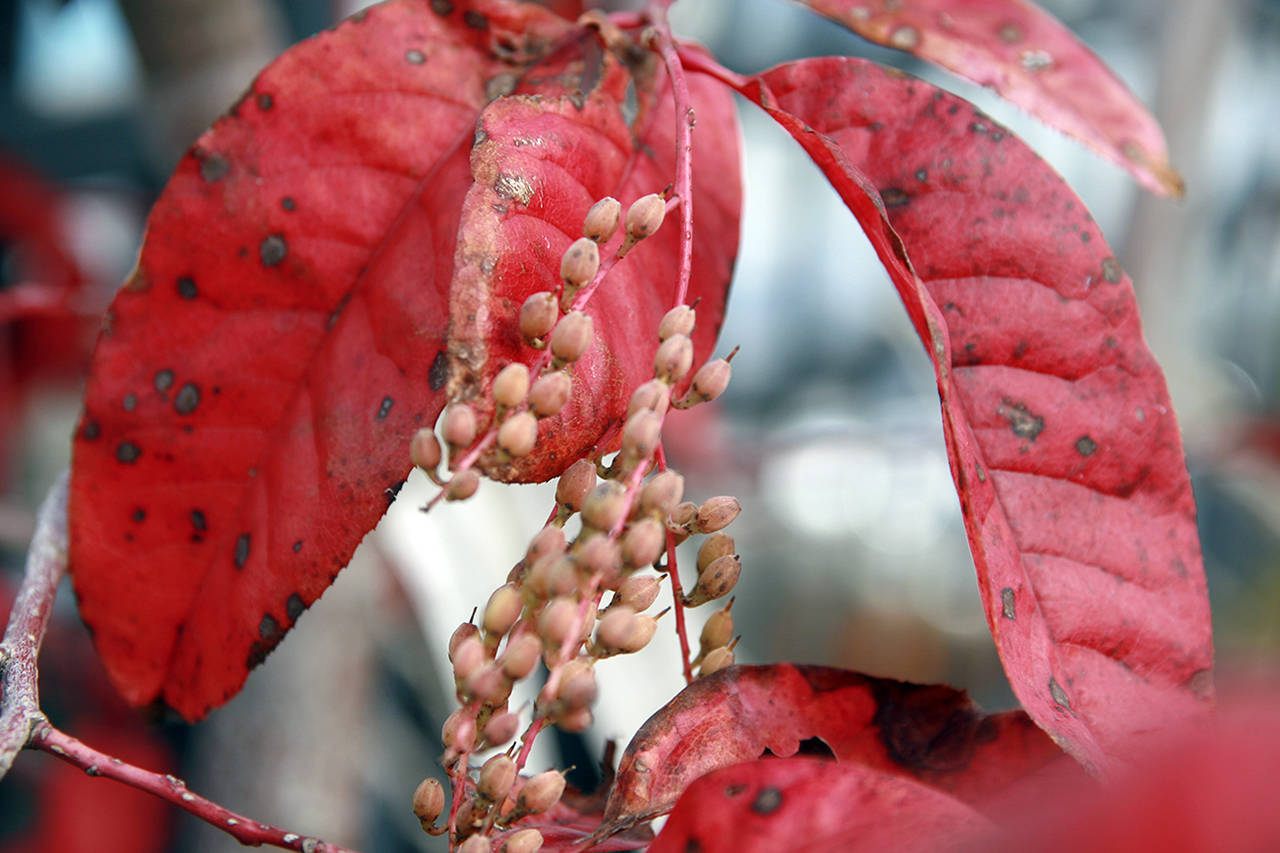Oxydendrum arboreum, commonly called the sourwood or sorrel tree, is a flowering tree native to the Eastern United States. It is one of my very favorite trees because of its inflorescence and autumn color. It is a multi-seasonal show.
Its name is derived from the Greek “oxys” and “dendrum,” meaning “sour tree.” This is in reference to its sour-tasting leaves. Arboreum means “tree-like.”
Perhaps the taste is why the deer leave it alone, at least in my garden. But it is not the taste of the leaves we are after with this deciduous understory tree.
The growth habit is delicately pyramidal, with textured drooping branches. The brown bark becomes blocky with age and the bark of a mature tree is fissured, ridged and scaly. The iridescent green young leaves mature to lustrous dark green, reminiscent of peach tree leaves. In cultivation it typically grows to 20 to 25 feet tall and 20 feet wide with a straight, slender trunk and a narrow, oblong crown.
It is best grown in acidic, moist, organically rich, well-drained soils in full sun. Partial sun somewhat diminishes flowering and fall color. It is intolerant of drought.
It is said that Northwest gardeners would give their best trowel for a specimen sourwood. The tree’s native habitat is in Eastern and Southern U.S., from Pennsylvania south to Florida and Louisiana. It is found on rocky wooded slopes in the Appalachian Mountains, often growing with azaleas and rhododendrons that share the same acidic well-drained soil with cool summers and well-defined winters.
The leaves of sourwood produce consistently excellent fall color, with the foliage turning yellow, orange, crimson, scarlet, maroon and blackish purple. All colors may be present on the tree as it drops leaves over a lengthy period.
The tree blooms in June and July, with fragrant drooping clusters at tips bearing bell-shaped creamy white flowers. In autumn, the branching clusters of seed capsules ripen outward and downward (from branches like fingers opening) from greenish to light gray, and they hang on into late winter. In the slightest breeze, the 10-inch panicles dance as if swirling in their long skirts. The panicles are slightly turned up on the ends and look happy all the time as if smiling.
Sourwood is difficult to produce under typical nursery conditions and is not the easiest plant to move, nor is it a well-known tree probably because of its scarcity. Still, it is a great choice for naturalizing in infertile as well and as acid soils in sun or part shade in Zones 5-9.
Don Tapio, former WSU Extension Agent for Grays Harbor and Pacific counties, introduced sourwood to me in 1996 , when I took the WSU Master Gardener training. He told me it would be worth the search because of its outstanding autumn color. I found one. I am forever grateful to him for all he taught me, and when I glance at the sourwood’s dancing panicles, it gives me much pleasure.
My garden was to be included in the July 2020 Master Gardener Garden Tour. However, because of COVID-19, the tour has been postponed until next summer. Hope to see you all then! Be safe.
This article, by Master Gardener Dolores Cavanah, is part of an occasional series in which she describes the plants she most admires at her expansive garden at Schafer Meadows, east of Montesano.
Do you have a problem with a plant, or do you want some help with disease prevention in your garden? Do you need help finding the right plant for a specific location? Ask a WSU Master Gardener! Go to PNWMG.org and post your question where you see “Ask a Master Gardener” toward the bottom of the home page.


